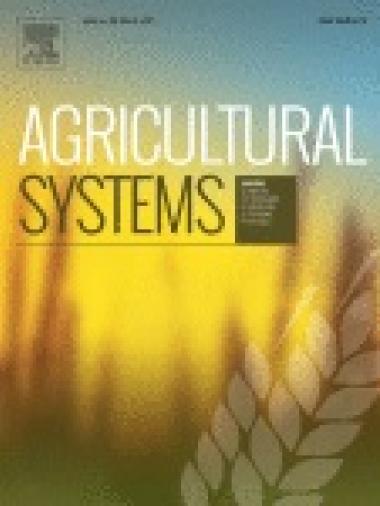Quantifying farmers' preferences for cropping systems intensification: A choice experiment approach applied in coastal Bangladesh's risk prone farming systems

CONTEXT
Sustainable intensification (SI) is envisioned as an effective strategy for developing countries to increase farm productivity while reducing negative environmental and social externalities. The development of regionally appropriate SI options however requires accounting for the knowledge and preferences of key stakeholders. In Bangladesh, the Government has requested international donors to support the development of dry season rice expansion in the coastal region. Policies however tend to be made without adequate study of farmers' preferences and ambitions; this can render crop intensification efforts ineffective. Understanding farmers' preferences for alternative crops and crop management practices are therefore crucial for success where agricultural development investments aim at incorporating the principles of SI.
OBJECTIVE(S)
Using coastal Bangladesh as a case study– we aim to (1) quantify farmers' preferences for alternative irrigated crop and crop management options in comparison to the status quo (land fallowing), (2) analyze whether farmers' preferences are conditioned by concerns regarding the cost and availability of irrigation and fertilizer inputs in comparison to expected net revenues, (3) understand how the heterogeneity in preferences can be attributed to farmer and/or farm characteristics, institutional, and biophysical factors, (4) determine how much farmers' are willing to invest in different crops and crop management options – including those reliant and not reliant on irrigation.
METHODS
Taking 300 farmers in two diverse coastal environments, a choice experiment (CE) was employed to explore the heterogeneity in farmers' preferences for different dry “rabi” season intensification options (‘boro’ rice, maize, wheat and mungbean) against the status quo (dry season land fallowing after harvest of the monsoon season rice crop). Analyses included random parameter logit modeling followed by willingness-to-invest and profit simulations.
RESULTS AND CONCLUSIONS
Analyses revealed strong farmer preferences against rice and in favor of irrigated maize, and also in favor of rainfed or partially irrigated mungbean as an alternative to land fallowing. Irrespective of their location and environmental conditions, respondents had largely a negative preference for irrigation and fertilizer use due to high investment costs and associated production risks in the dry season. Nonetheless, a significant positive effect on their willingness-to-intensify cropping was observed where farmers felt it feasible to provide in-field drainage to limit waterlogging risks.
SIGNIFICANCE
The study signifies the importance of accounting for farmers' preferences while developing context-specific SI policies. Improving agronomic investments, tenure security, market, credit and extension support are likely prerequisites, alongside targeted diffusion of stress-tolerant mungbean and maize varieties for SI in coastal Bangladesh.
Citación
Aravindakshan S, Krupnik TJ, Amjath-Babu TS, Speelman S, Tur-Cardona J, Tittonell P, Groot JCJ. 2021.Quantifying farmers' preferences for cropping systems intensification: A choice experiment approach applied in coastal Bangladesh's risk prone farming systems. Agricultural Systems 189:103069